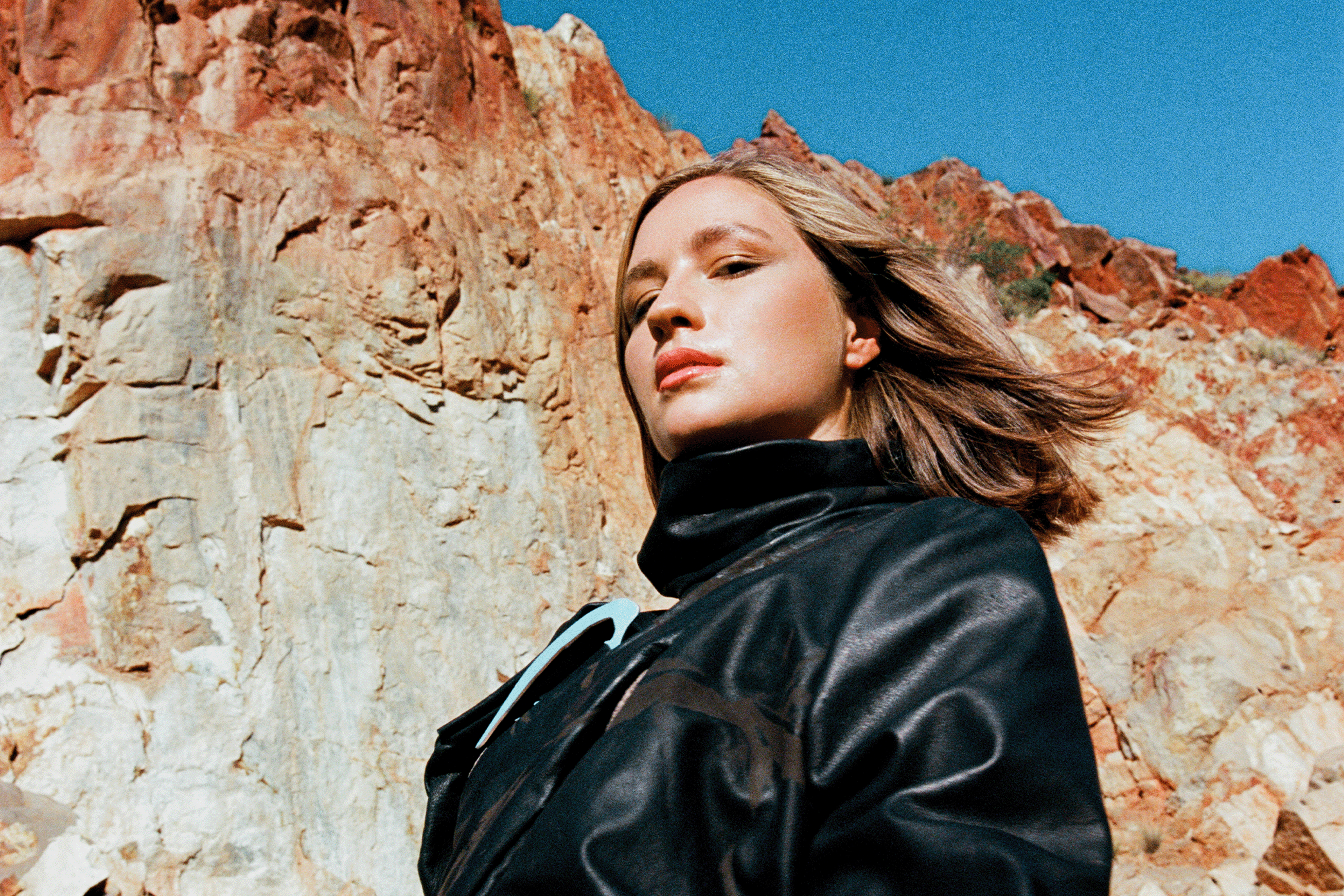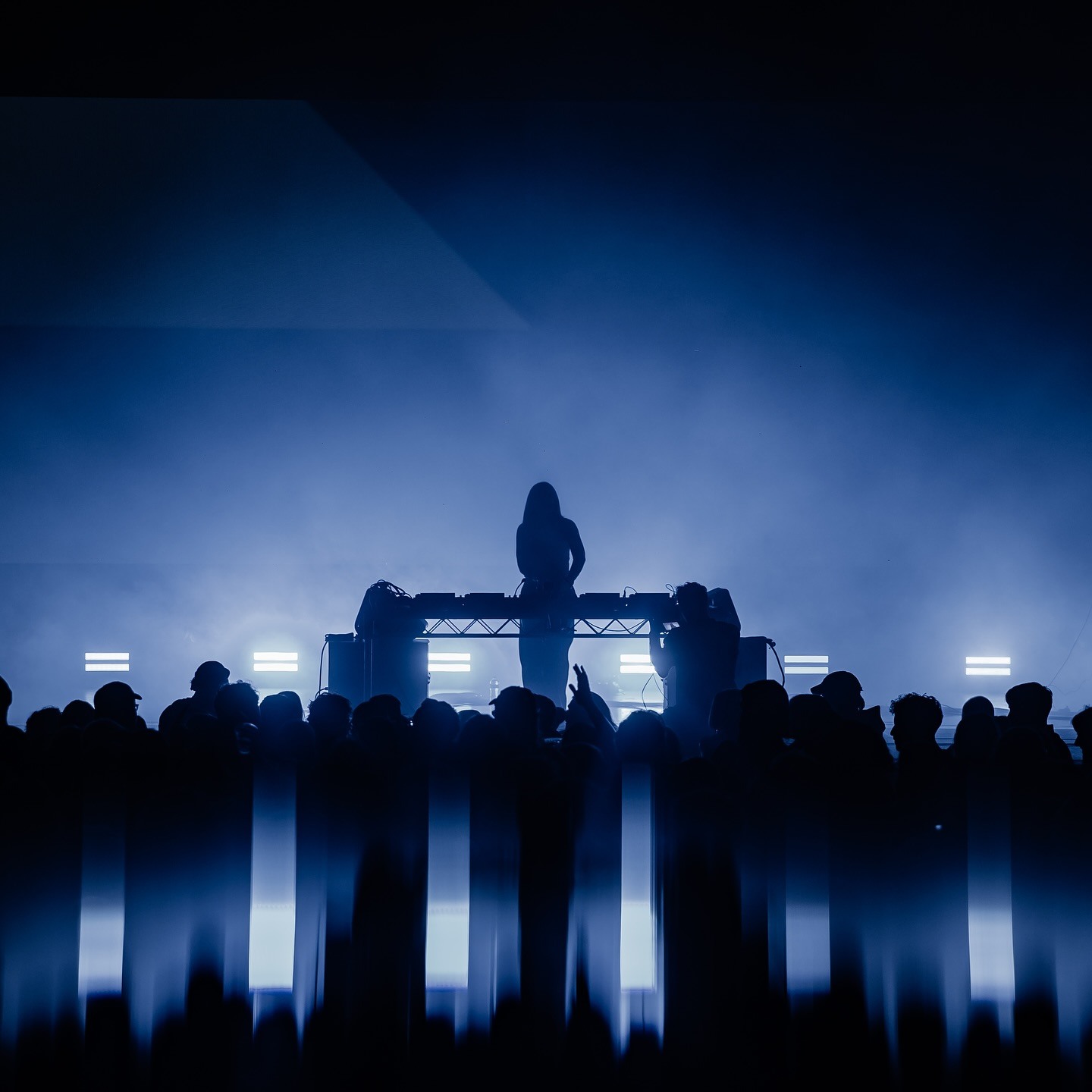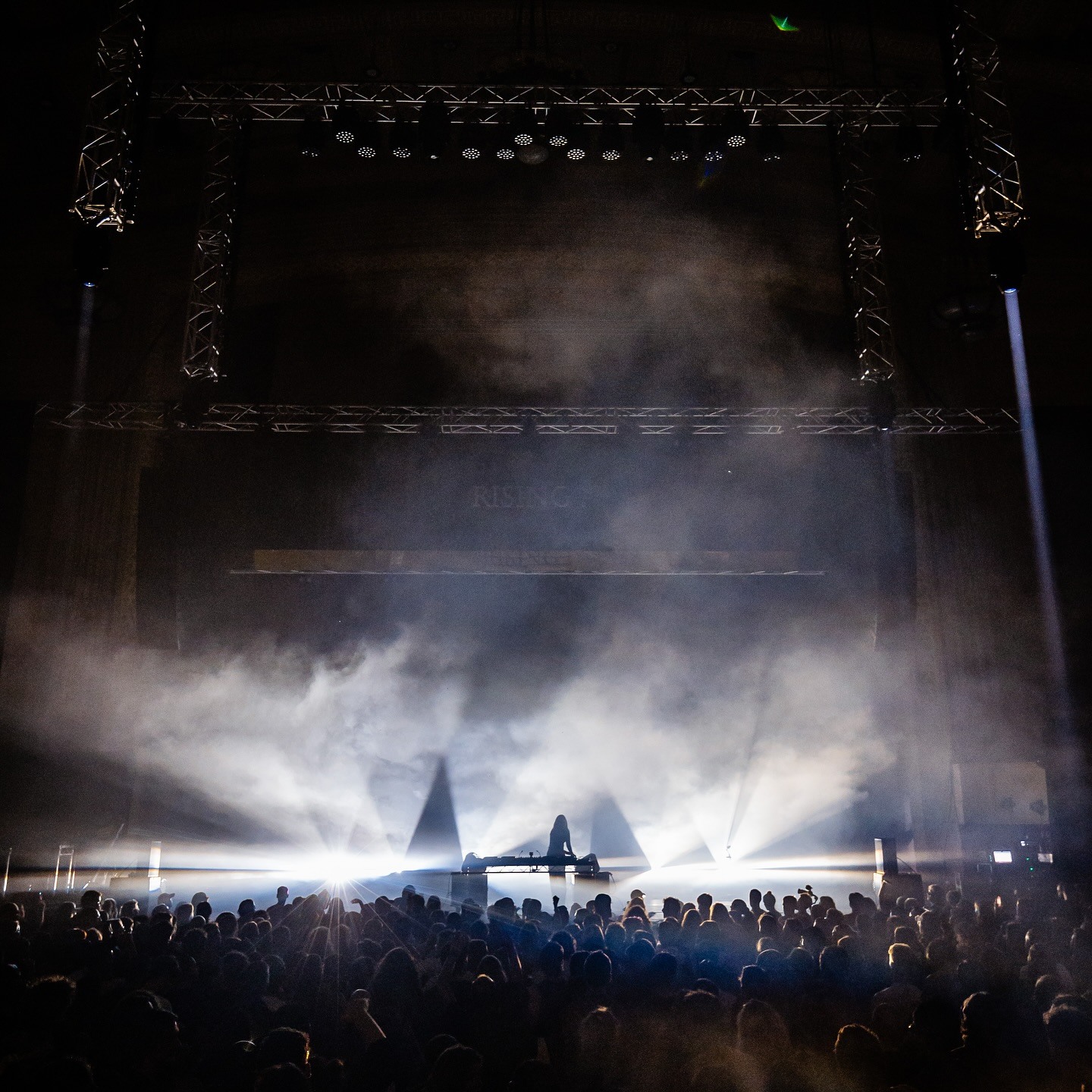 INTERVIEWS
INTERVIEWS
RONA. rejects the race to space on 'It's All Here'
Kaytetye producer and DJ RONA. shares some words on her emotive, enlightening second EP.
On her second EP ‘It’s All Here’, Kaytetye producer and DJ RONA. provides more than just dance music, she delivers a statement about Country “anchored in Indigenous futurism.”
The release rejects the narrative that the answers to humankind’s enduring survival lie in the stars, instead focusing on the land itself, and the knowledge that has sustained First Nations people for millennia.
For dance music, this kind of philosophical and emotionally-driven thinking is few and far between, particularly when the attention span for new ‘tracks’ and releases grows ever shorter. It’s with all of this context that RONA. sets herself apart with the release, connecting sound, memory and place into a piece of work that is not only powerfully innovative, but feels like it’s been here the whole time.
To reflect on ‘It’s All Here’, we managed to grab a moment of RONA.’s time.

Q: RONA, thanks so much for making the time to chat. ‘It’s All Here’ is your second EP. What do you think you’ve learned since your first that influenced how ‘It’s All Here’ came together?
RONA.: With three years between EPs there’s been so much that has shifted and grown within me. Since my first EP, I’ve learned how good it feels to focus on process rather than output, to slow down, listen deeply, and let the music come through in its own time.
When the process is aligned, that’s when the energy in the tracks feels alive.
Being out on Country at a bush house for a long writing period, gave me a special kind of grounding, that sense of place and connection shaped everything. The process of creating clapsticks with Old People was such an integral part of how the EP unfolded. Playing those same clapsticks in the tracks carried the energy of that time out bush with knowledge holders, it felt like their spirit and knowledge were resonating through the music.
Q: In the lead up to its release, you’ve spoken about it being “anchored in Indigenous futurism”, and that the contemporary race to space is juxtaposed with ancestral knowledge. Why was this such an important theme for you to explore here?
RONA.: The world is shifting at such a rapid rate, but this model of moving to have more, do more and be more doesn’t work. Looking beyond where we are to extract and continue the colonisation of other contexts is absurd. We should be looking toward our communities, Country and our relationship to place to find answers for our future. First Nations cultures have always held the answers to innovation. When patterns in the environment change, our people have adapted and maintained balance within the bounds of the ecosystems we live in. We are in this moment looking toward the future, but I believe all our answers are already here, within us, within our communities, not beyond us.
Q: Afrofuturism is often cited as the key influence behind the development of techno and electro. With Indigenous futurism, do you feel a looming musical innovation in Australia?
RONA.: I’ve been deeply inspired by Afrofuturism and the pioneers overseas, whose techno and electro was grounded in liberation, freedom and self expression. While our context here is very different, we can pick up the tools people have used there and converge them with what exists on this continent. Our Old People and Ancestors have always been deep philosophers and thinkers, exploring how our futures are bound to our past and present. There is much to learn from our cultures and ways of thinking, being and doing, and it’s a privilege to explore what that means in electronic music, which is expansive in its possibilities.
A waveform can do anything, it can hold and transfer energy and to me the opportunities are limitless.
It’s important to remember that within our songs and sounds across this continent there is already deep innovation. Our song cycles, rhythms and sounds are unique to this place and have always been here. I’m excited to grow from what is already here, stored in the energy of place and in the knowledge of my Old People.

Q: What do you think humanity’s obsession with exploration of the stars says about our disconnection from the earth and each other?
RONA.: While there is a deep connection between the Country we see and exist within every day and Sky Country, which includes the stars and other planets, I think the contemporary race to space is absurd. We don’t need to leave this place to find answers or to resource the future. We can exist here, in relationship with those places, because Sky Country is already intertwined within us. We don’t need to go anywhere to be part of it. We are it.
This idea that the future lies somewhere beyond us feels like another expression of disconnection, disconnection from the earth beneath our feet, from each other, and from the wisdom that has always guided us here. Our Ancestors have always understood Sky Country not as something separate or far away, but as part of the same system of knowledge that connects land, water, people, and story. The stars tell us when to move, when to harvest, when to rest. They are teachers, not territories to conquer.
Q: Country clearly plays a huge role in the emotional landscape of the EP, alongside its visual identity. How do you incorporate Country into your production process?
RONA.: Many of the songs on this EP were written on and within Country. I wrote from a bush house and would start each song playing synths from an outlook over the desert. As a riff or melody unfolded and I had laid down something, I would open up the doors and windows and play that back to Country. The birds would join and respond, and I would then take a mic out of the room to record the bird songs, textures and rarre (wind) that came back.
Being in relationship with Country is such an important part of my writing process. A couple of songs were written off Country, and you can hear that in how they sound and sit within this world I’ve created, but also adjacent.
Q: The video for ‘Mars’ is, in many ways, shot as a sci fi film, but in reality would have been shot on Country, presumably not far from where you live. Dance music is something increasingly associated with city centres, but why do you think it’s important for us to challenge that trend?
RONA.: The Mars video was shot by Tyson Perkins on Arrernte and Anmatyerr Country in the desert. So much of dance music has often come from the urban underground, but there is an energy and pulse that exists outside of those contexts. It’s important to highlight that the future can be remote. It can exist in spaces that move quietly, that hold a different rhythm. My contribution to the canon of dance music comes from the expansiveness of desert Country, from my experiences moving between the urban and the remote, drawing from those distinct contexts but always returning to the knowledge and energy of what I know best, my home in the desert.
Q: In contrast, the visualiser for ‘It’s All Here’ is a very technical dive into what appears to be some kind of primordial organism. How did this collaboration with Mikaela Stafford come about?
RONA.: Mikaela is an incredible artist and a friend. We have always dreamed of working together, and when I was with her last year, I spoke about the concept and story behind the EP. It aligned so naturally with what she explores in her work. It was such a joy to collaborate as she interpreted the story in her own way and contributed to the visual world this EP has built. We also worked on a set for Rising Festival earlier this year, and she created a 60 minute visual story of the themes explored in the EP. It was incredible to share all this new music with her artwork bringing it to life for a sold out crowd. I still get chills thinking about that moment and how special it felt.
Q: On ‘The Blacks’, there’s a sample you’ve placed during the breakdown which emphasises that First Nations Australians are the oldest living culture in the world, and the threat of that culture’s destruction, with repetition of “Your language is your culture.” Can you give us some background on where this sample is taken from and why it was so important to feature in this track?
RONA.: The samples in ‘The Blacks’ are from archived speeches my Nana Freda made during the 1980s, when she co-founded the Central Australian Aboriginal Media Association (CAAMA), the first Aboriginal owned media company, radio station and recording studio on this continent. My Aunty Erica and cousin Tanith made a documentary called She Who Must Be Loved in 2019, and the song draws from samples they uncovered in the archives during the creation of that film.
Nana’s words explore the destruction of culture happening at the time and the importance of reclaiming and strengthening our language and narrative. Her words are just as relevant today. The song also pays homage to the beginnings of the desert rock movement and the role of music in contemporary contexts from the 1980s and beyond, with a guitar sample and vocals from the Lajamanu Teenage Band, an iconic band in the blackfulla desert rock movement.
Q: At a cursory glance, many may not think that there’s room for storytelling within dance music like there is in other, more vocal genres. How do you think that storytelling presents itself in your sets, and here in this release?
RONA.: Electronic music is an incredible medium for storytelling, where stories can be drawn from the selection that are made, drawing to the context of sound, history, energy and the journey you go on collectively on the dance floor. I’m playing predominantly my own music during sets these days, and that feels like the space I want to hold as I play out for now. I often sample family members, different vocal chops from speeches, language and desert sounds. It still feels early in this journey, and I’m excited to continue honing this practice as a sonic storyteller.
Q: Rarre Records is your own imprint, which you’ve released ‘It’s All Here’ on. Why was it important for you to release this project independently?
RONA.: A lot of the songs I’m creating right now are ones I want to hold close, they centre important context and memory. As Blackfullas, there is a long history across art and culture of people misappropriating our work. I want to own my own masters and create space for works to exist independently and stand on their own. A number of my recent releases carry bold statements, and it hasn’t felt right for them to sit within non-Indigenous ownership.
Q: What are your plans for Rarre Records?
RONA.: For now it’s a place for me to release my own music, but I hope that over time it can become a space to release music from other First Nations artists who are creating on their own terms, in their own ways.

Q: With shows both across Country and abroad, how does it feel to take work which is so rooted in a specific place and translate it to international stages?
RONA.: I feel really privileged to be able to play my music in so many different contexts and am enjoying seeing how different audiences respond to the stories I’m sharing. My favourite contexts to play are often open air festivals or gigs where you can feel a strong energy from Country, where the wind, the birds or the rain respond as you play sounds from desert Country. That’s so special.
Q: Looking ahead, what do you hope for the next generation of First Nations artists in Australia, and what role do you see yourself playing in that future?
RONA.: I hope more Mob have the resources and backing to self determine their creation. There are a lot of barriers to participating in this industry, and many people in regional and remote areas are often left out of the story completely. Living in the desert, I plan to keep sharing knowledge through production and DJ workshops and to support more pathways for remote Mob to be part of this growing ecosystem in electronic music.
-
Jack Colquhoun is Mixmag ANZ's Managing Editor. Find him on Instagram.


